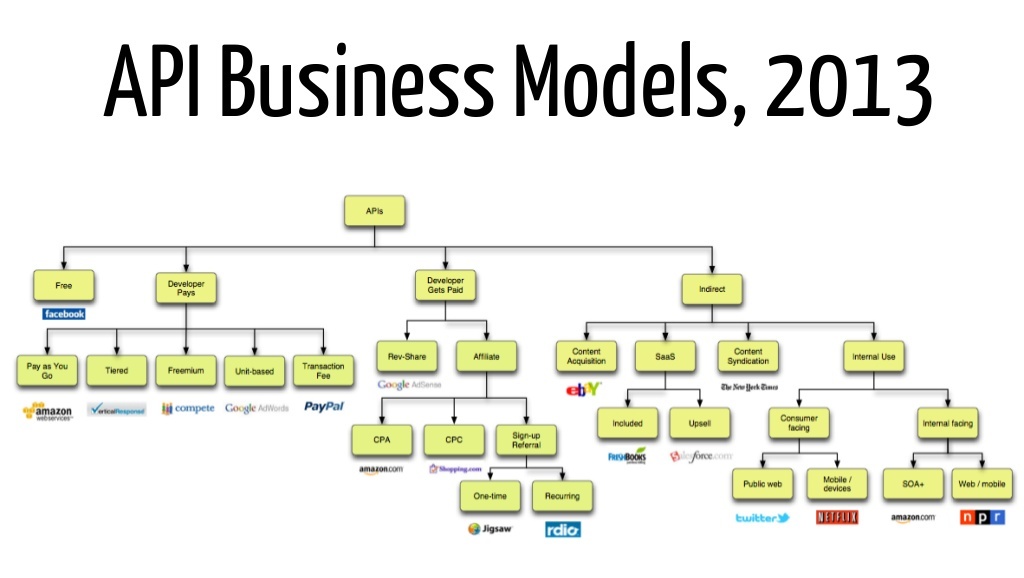6 Steps to Implement API Economy
A few years ago, the notion of “API commercialization” was unclear and vague. Hardly any company grew its profitability by means of providing API. Today, it is common knowledge that the data held in-house and internal services are valuable and can generate returns. This applies not only to the internet industry companies but to every big organization. In this post, I am going to discuss:
- what API Economy is
- basic business models in this concept
- possible methods of its implementation
What is API Economy?
Let us start by explaining what API (Application Programming Interface) is. It can be defined as an interface enabling various individual systems to communicate and exchange information. API Economy is a concept assuming that the information is traded on a commercial basis. The notion, however, should be defined widely. Commercial exchange of informational resources does not have to rely on direct payment for the access to services and data. API can be provided in a different way (and also publicly to a wide group of beneficiaries). What is crucial, however, is that such API provision has a positive impact on the organization’s profitability.
A good example is offering data to partners who, in turn, can share the data further, thus enhancing the accessibility of our services, and consequently boosting our sales. Partners can also merge their services with ours to make them more attractive. Depending on the resources provided, the final benefits can be direct (sale of products for money) or indirect (advertisement, attractiveness in the clients’ eyes, attachment etc). All these examples are determined by a given API Economy business model.
API Economy Business Models
In 2013, John Musser juxtaposed API Economy models available in the market, dividing them into four main types:
1. Free
A model that is not the most common, according statistics. It consists of providing API free of charge. Among the organizations which provide services this way are the likes of Facebook and public institutions.
2. Developer pays
A business model whereby access to services is provided for a fee. The fee can be calculated in different ways (for the time spent, number of calls (queries), percentage of the transaction delivered, etc.).
3. Developer gets paid
In this business model, it is the developer (external firm) availing of the API who can be remunerated as they will bring the benefit to the API provider. For example, the fee can be paid to the developer who, by using the API, will create a platform enabling the clients to subscribe to our services or referring the clients to our products. It should be highlighted that individual fees are usually very small and consist in “sharing” what we earn on the client.
4. Indirect
This model contains all the other methods of deriving benefits from API, such as providing API to a select target group (e.g. the one which has bought the license, such as Salesforce.com), or giving third party companies access to the API with a view to growing their market position by way of sourcing content (e.g. Twitter).
The graph below presents a detailed breakdown of business API Economy models as proposed by John Musser.

John Musser, API Business Models – 20 models in 20 minutes
6 steps to API commercialization
Before you embark on implementing the API Economy concept, remember about a few crucial elements:
1. Identification of the data and services to be provided
The analysis of which services can create a competitive edge for an organization and how it can be achieved. Upon identification, it is also worth analyzing in what order they should be provided.
2. Selection of the API business model
Leverage of one or a few models to maximize benefits.
3. Efficiency measurement
Defining the parameters by means of which it will be possible to evaluate the potential and possible success of the adopted API Economy concept.
4. API Strategy
All the above elements should be written down in a document defining the organization’s API related strategy. The API strategy should stem from the enterprise’s IT strategy and incorporate all the elements typically contained in such documents (objectives, framework schedule, etc.).
5. API adaptation to the users’ and developers’ expectations
It is the interest of the users of end applications, as well as their developers, that will determine the project’s success or failure. Accordingly, it is essential to define the expectations these two groups may have in the area where we are going to provide API. Both functional requirements (to be used at least indirectly by end users) and non-functional ones (important for developers) are crucial.
6. Definition of architecture and selection of development technology
There are a whole lot of viable general concepts that help provide services in a heterogeneous IT infrastructure. Most of them are based on an enterprise service bus (ESB), representing the central component of that architecture. Many producers offer secure and efficient solutions under an open-source license. Among them are Mulesoft or WSO2, which offer API Gateway solutions. These API Gateway functionalities (design, publishing, management, limitations, analysis, security) are particularly important in some API Economy business models.
You are welcome to contact us if you would like to learn more about API Management.








